

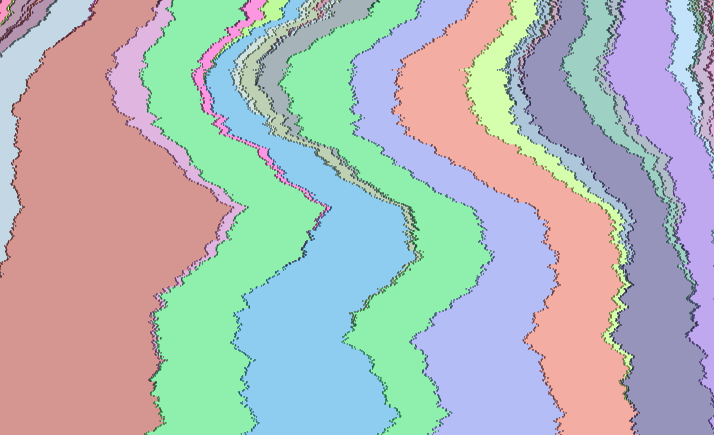
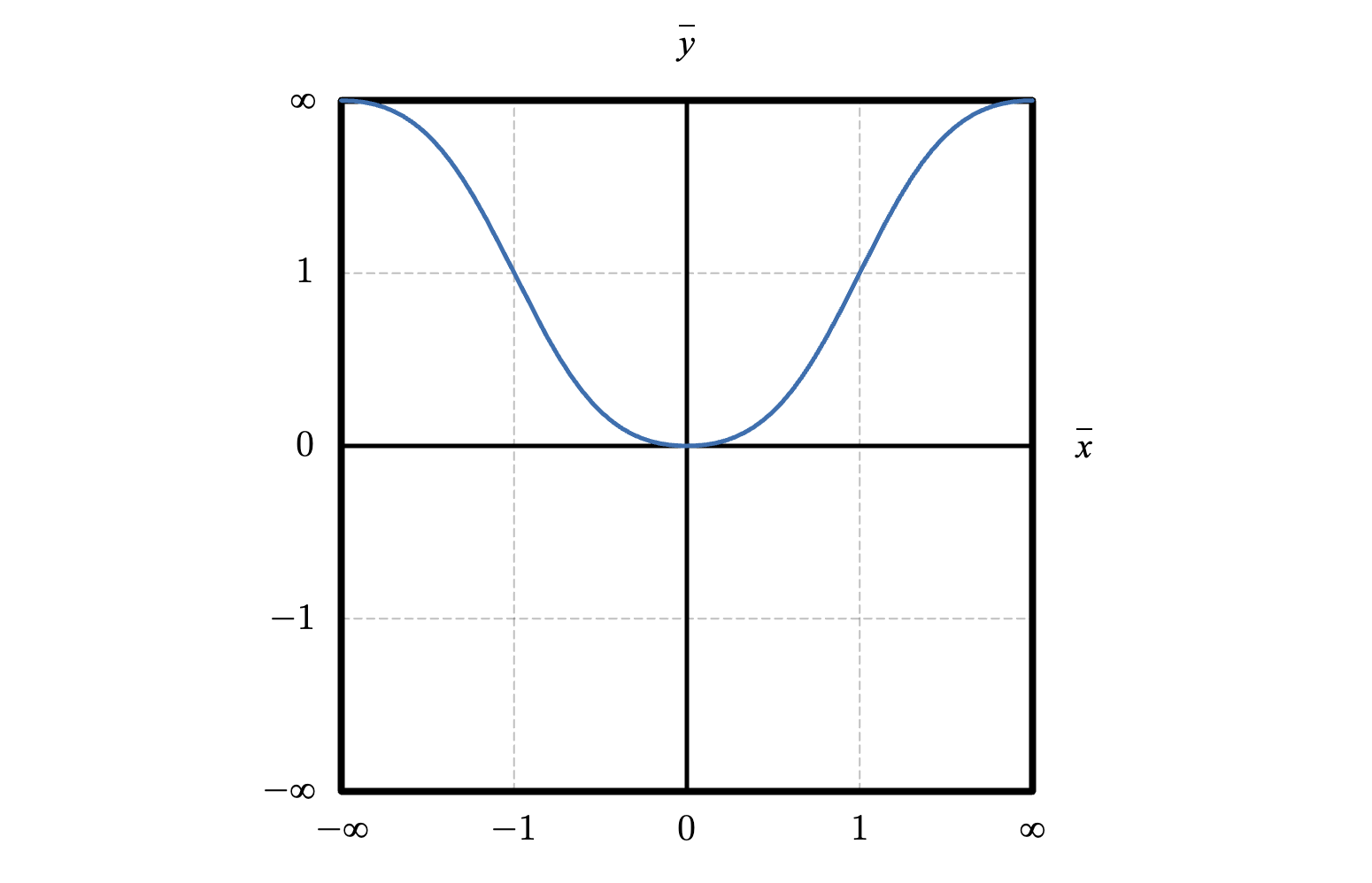
-
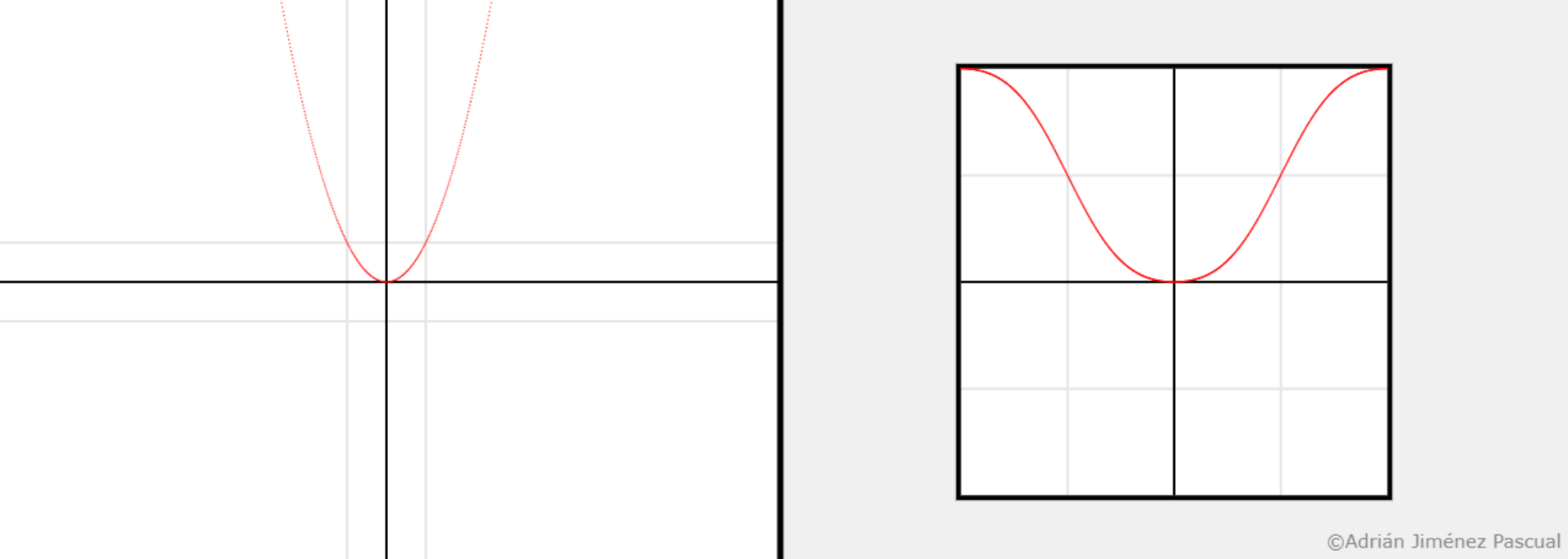
Parabola $x^2$ on the left and its fenced representation on the right. 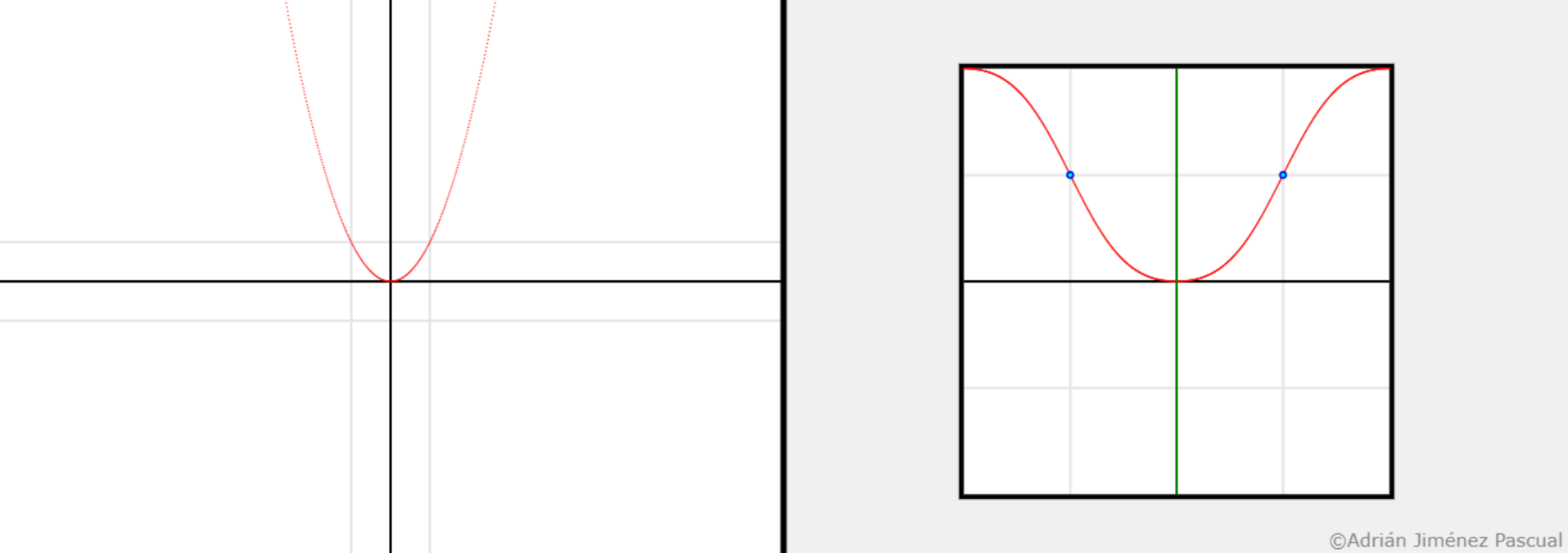
The parabola $x^2$ has one axial symmetry and two branch symmetrie about a point. 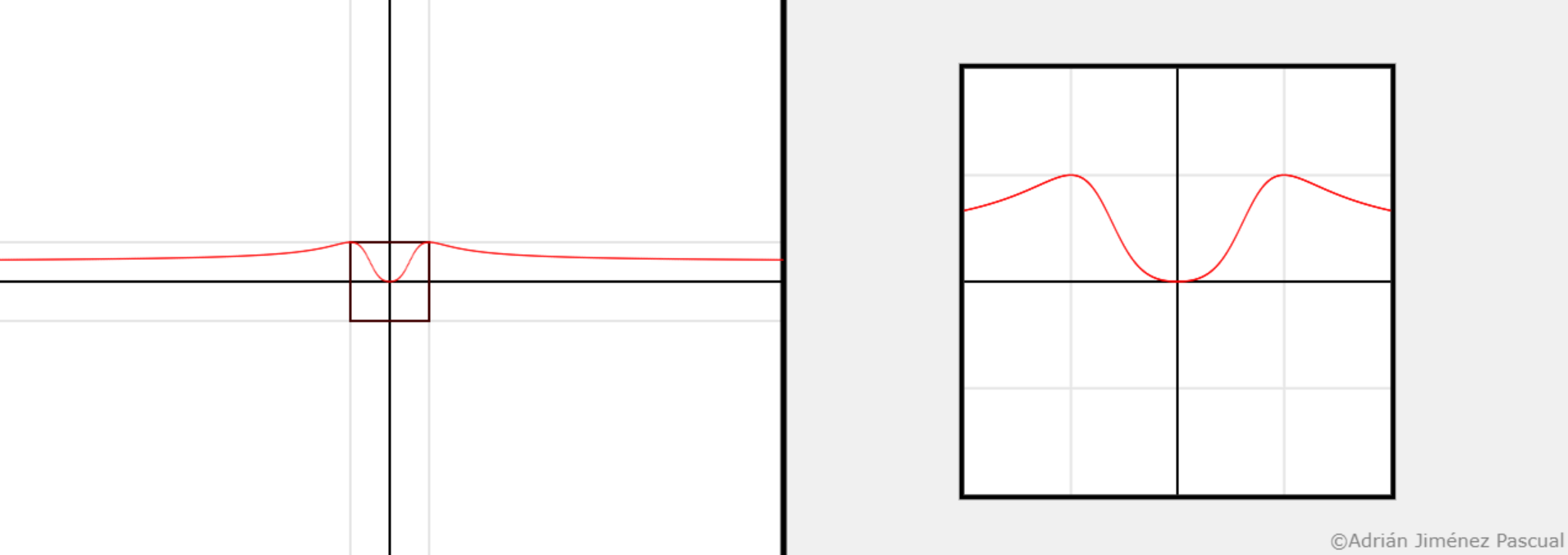
Left: Fenced representation of the parabola $x^2$ interpreted as the input function.
Right: Fenced representation of it.